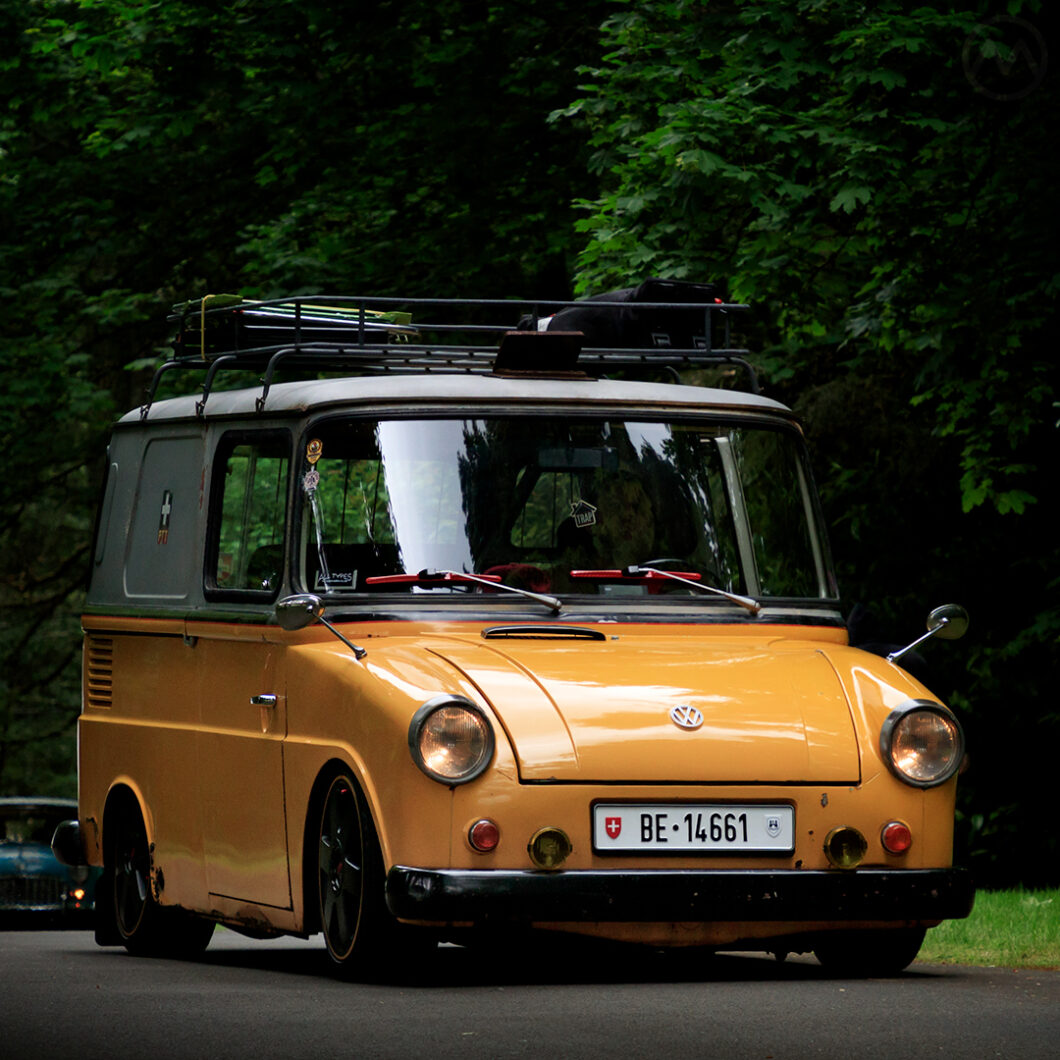Seeing any Volkswagen Type 147 Kleinlieferwagen, colloquially called the Fridolin, is a real rarity, but a Swiss-market model rolling up anywhere in the U.S.? That’s a genuine unicorn, and we spied this Swiss-spec one at the 2021 Old School Reunion in the Pacific Northwest.
A purely commercial model, 7,340* of these little postal vans were made from 1964 to 1974, 1,201 of which were built for Schweizer Bundespost PTT with a variety of upgrades. 85% of the rest were built for Deutsche Bundespost. The vans were also built for Lesezirkel-Service (Reader Community Service) and for Lufthansa, who used them as apron vehicles for many years at Frankfurt, Munich and other bases.
While VW dealers did sell them to retail customers, very few “civilians” were interested in a vehicle like this. Nor was it widely advertised. As with most fleet machines, they were used until they were used up. Work vehicles are exactly what it says on the tin, and their drivers and owners are rarely sentimental about them. Fridolin superfans estimate that only about 200 remain—worldwide.
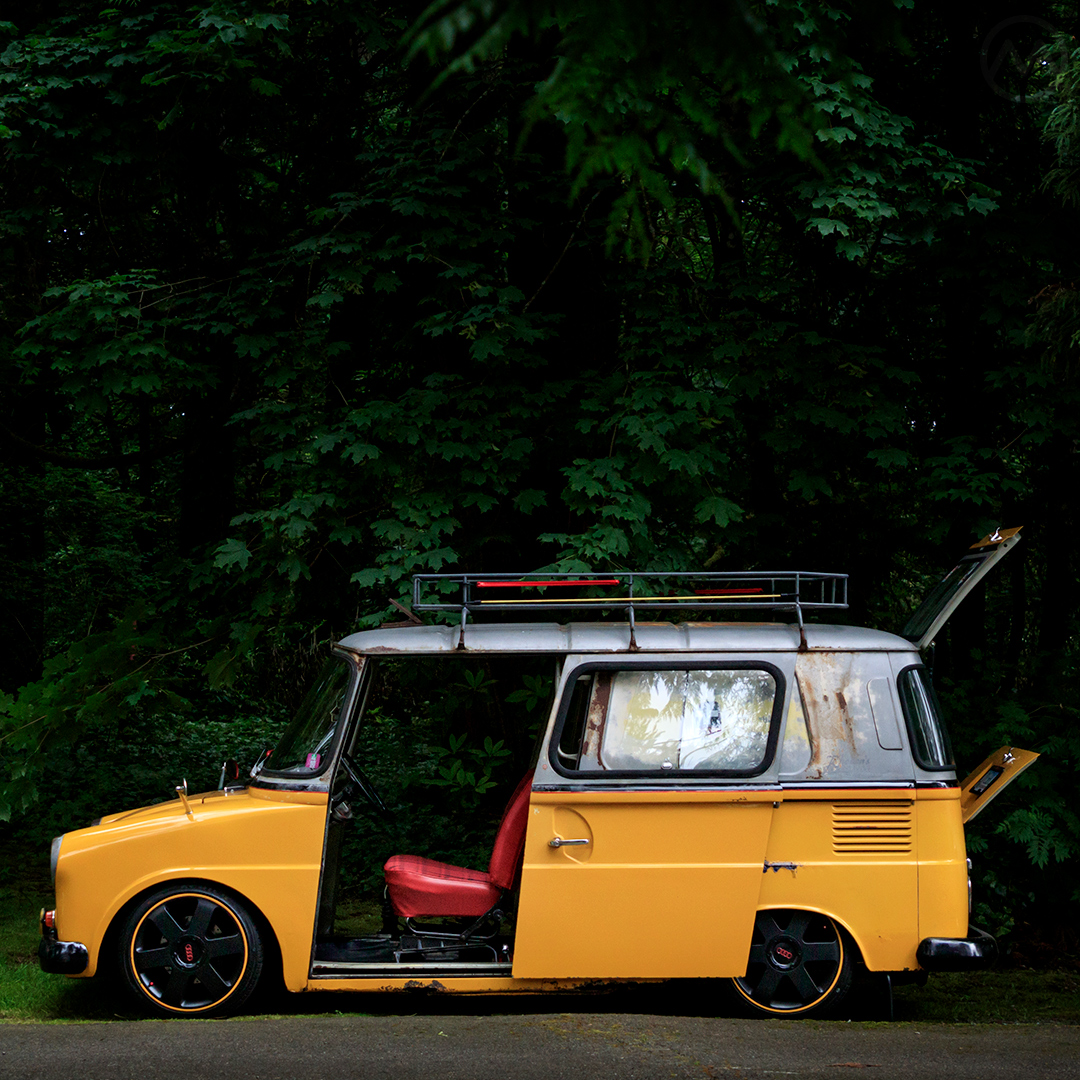
German Postal Vans
A highly specialized vehicle, the Type 147 evolved from a specific request by Deutsche Bundespost (the German postal service), which needed an urban mail vehicle with more capacity than a Beetle or a Lloyd 600 wagon but took up less space than a VW Type 2 van. It does seem like there might have been other alternatives out there, but the service had already tried one and found it wanting.
Deutsche Bundespost first sampled the Goggomobil 250 TL van. Sized like a modern Japanese Kei van and based directly on the tiny Glas Goggomobil car, the 250-cc two-stroke powered delivery van looked like a scaled-down version of an American step van. It was adorable and had lots of room inside relative to its tiny size, but the little two-stroke did not prove up to the demanding start-and-stop tasks of city mail services.
In early 1962, they went to Volkswagen and presented a very specific brief. The built-to-spec van had to have 71 cubic feet of storage space (about the same as in a modern Toyota RAV4), be 3.75M (12.3 feet) long and 1.44M (4.7 feet) wide, but it could be up to 1.7M (5.6 feet) high; small but tall, which worked for carrying packages around.
VW created the product using off-the-shelf bits to keep the cost low. The floorpan came from the Type 14 Karmann-Ghia, the widest of the existing Volkswagen products at that time. The 34-hp, 1192-cc engines and axles came from the Beetle and a variety of other hardware Came from the Transporter and Type 3.
The body shell, doors and glass would be entirely unique, and due to the low-volume nature of this very specialized design, VW contracted out body production and final assembly to Westfalia.
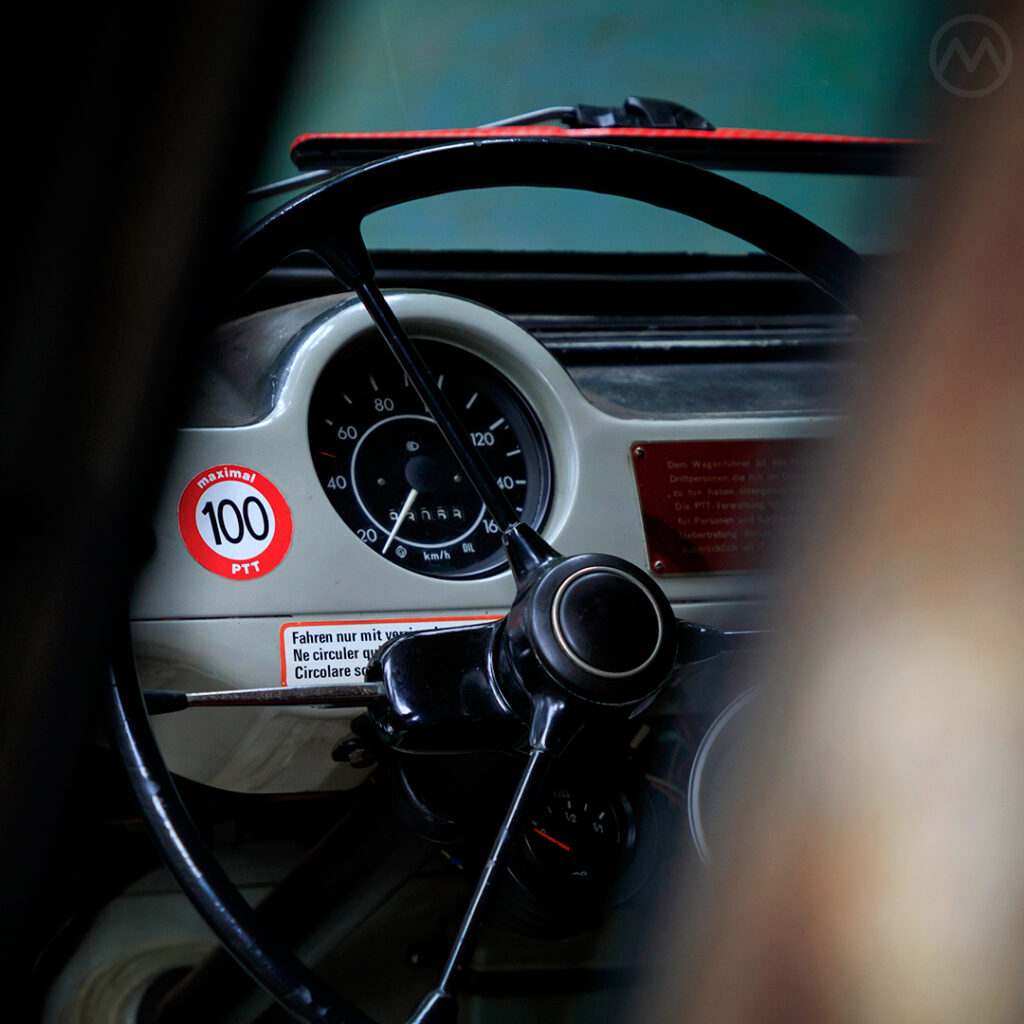
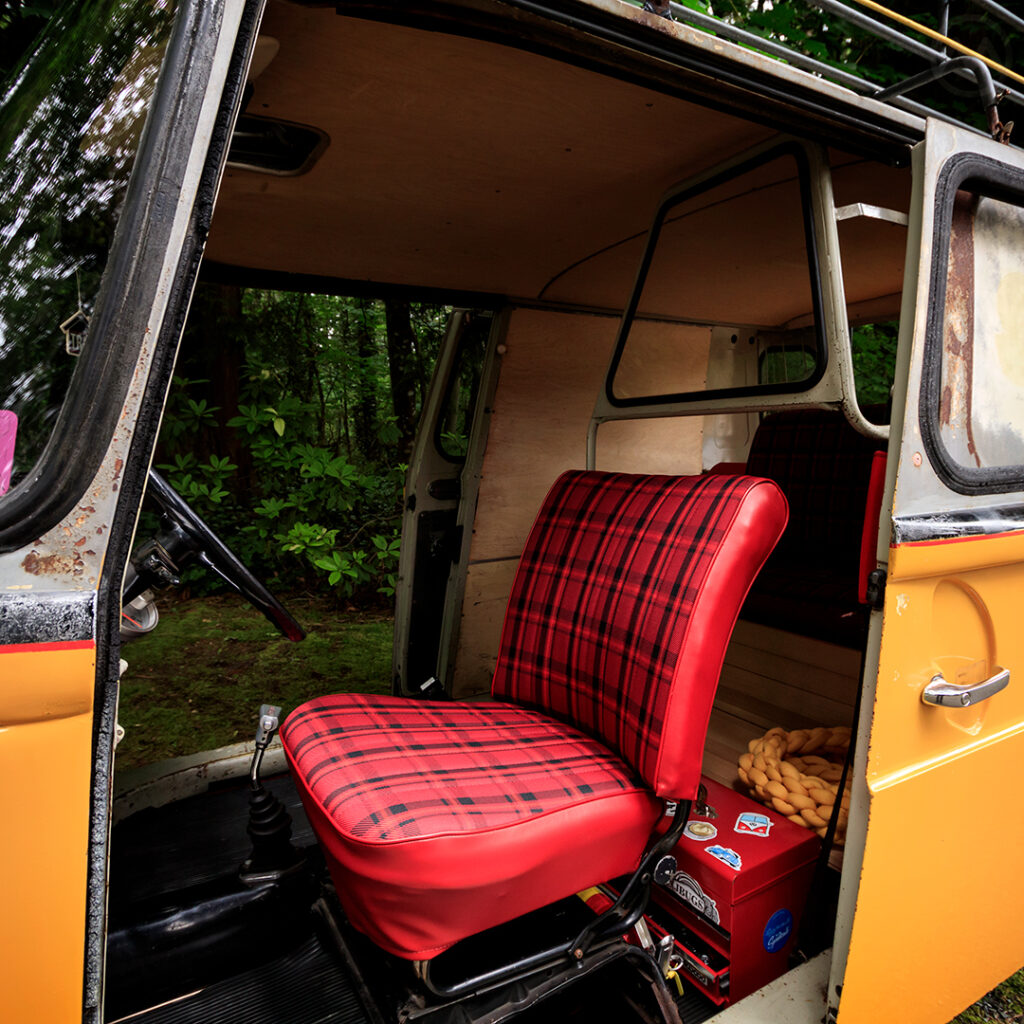
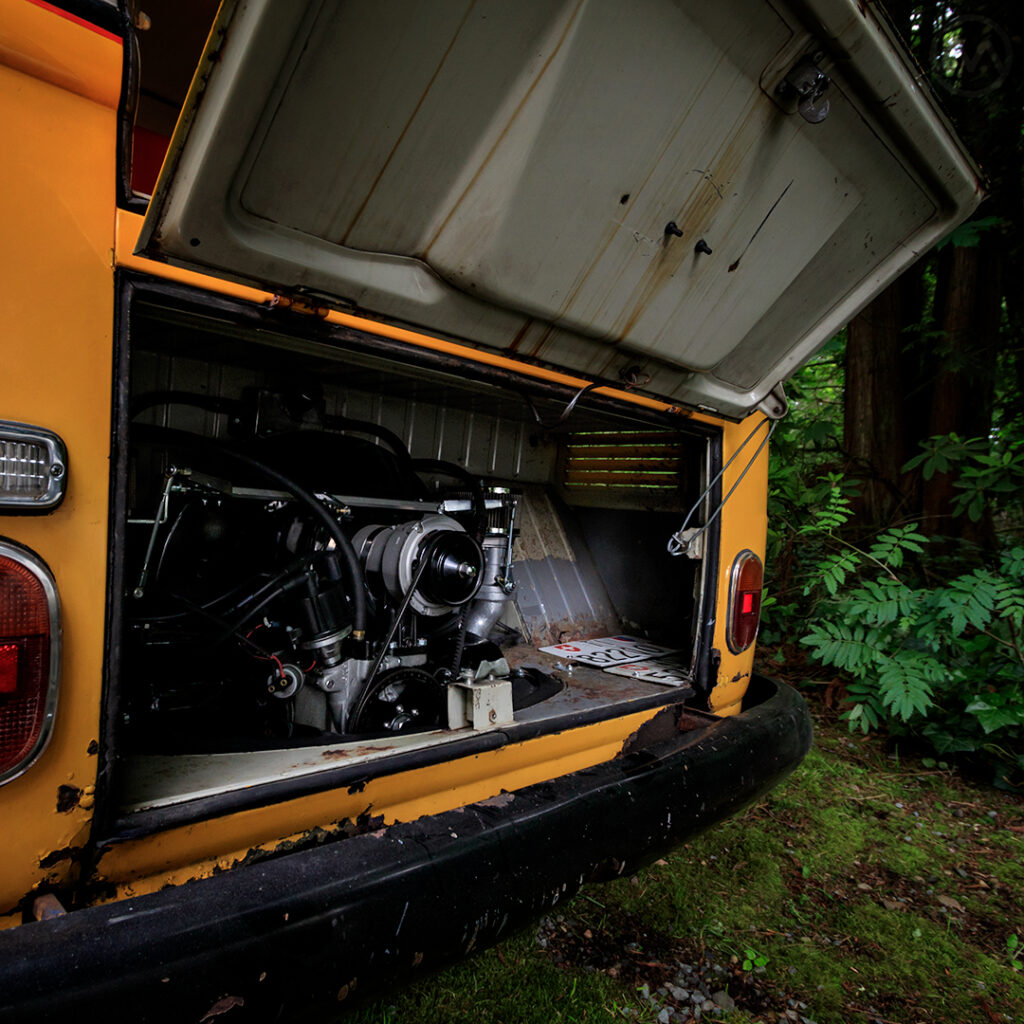
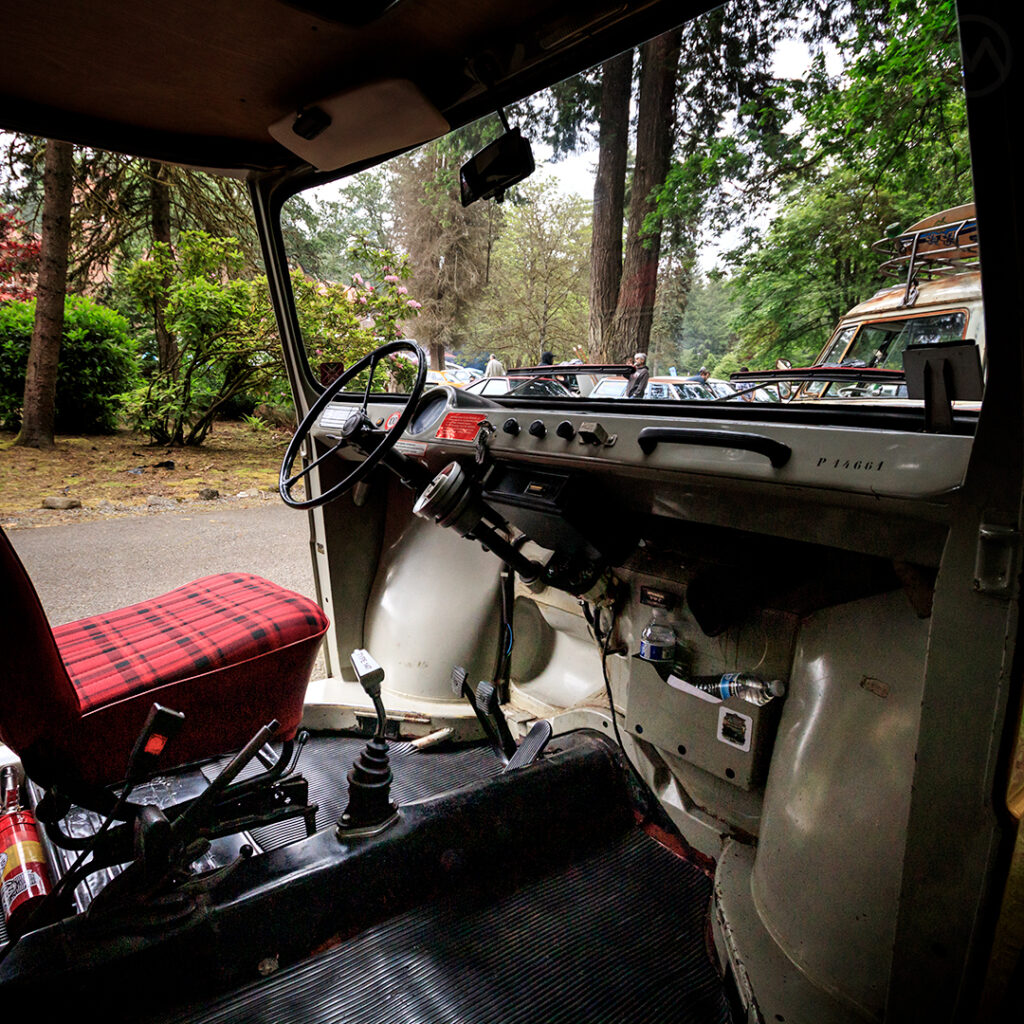
The Type 147 Fridolin
Prototypes were ready in August of 1963, and full production began in early 1964. The actual name was Type 147 Kleinlieferwagen (small van), but “Fridolin” came from workers at Westfalia. It’s exact origin and meaning aren’t 100% clear, but it’s been suggested that workers at the plant likened it to a similar-looking railroad maintenance car that was well-known in Germany at the time.
The Swiss version was the most interesting. Instead of the standard engine, it got the 44-hp 1,285 “1300” engine and disc brakes, which made it much quicker and better to drive, but its purpose was the same. Production ended in 1974, but the Swiss Post had ordered a large stockpile beyond what it needed (as the British Government did with the Rover P5), and new vans were still going into service as late as 1977.
Interestingly, the Swedish Post office had a similar need, but went to DAF, who built the similar-looking DAF Kalmar from 1969 to 1971, but in smaller numbers and with only a two-cylinder engine from the DAF 44.
Made entirely from durable and familiar Volkswagen parts, the main weakness of the Fridolin seems to have been rust. Like many 1960s cars, there just wasn’t much rust protection and it’s possible that there was even less from the Westfalia factory than on “normal” production VWs. They were in regular postal service until the early to mid-1980s and the ones which weren’t scrapped were usually not far from the boneyard. Golf vans often replaced them.
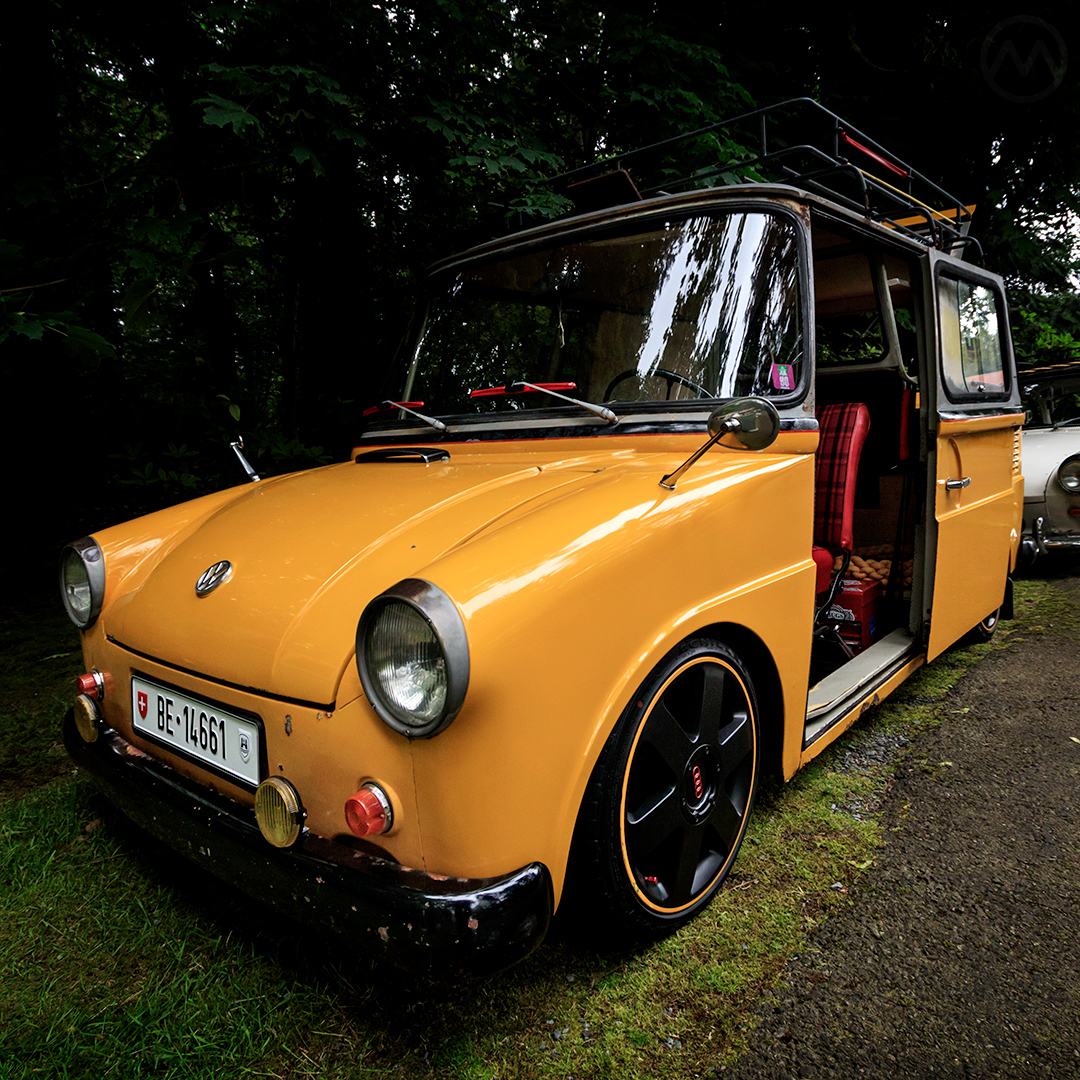
Rare But Not Valuable, Until Suddenly…
Fridolins may have been rare, but they weren’t necessarily seen as particularly valuable, the same way picking up a modern Grumman Postal Van (we’ve met somebody who did) would be very much an acquired taste. After all, this is a vehicle with almost no creature comforts and seating for one by default, even if its sliding doors and boxy shape made it a perfect delivery truck.
At the very least, the Type 147 Fridolin could be easily fixed, at least mechanically, thanks to all the standard and ruggedly simple VW Bits. But few people wanted them until fairly recently, hence the low survival rate. As you might remember from our photo album at the time, we spied this one at the Old School Reunion over the summer.
*The number of Fridolins built is disputed but widely considered to be 7,340, comprised of 6,139 1.1-liter versions and 1,201 1.3s, but sometimes the earlier number is quoted as the total.

